TATE TOWNSHIP, Ohio — Clermont County Commissioners may vote Wednesday on the future of large solar and wind farms in what has become a highly polarizing issue that is dividing rural communities across Southwest Ohio.
In October, crews broke ground on Clermont County’s first large-scale solar project, Nestlewood, on 610 acres of farmland in a small portion of Tate Township that stretches largely into Brown County.
The construction site backs up to Michael Rees’ 50-acre farm, where he trains horses.
“Part of the reason why I live out here is because it’s natural: soybeans, corn, wildlife. And now it’s nothing but construction trucks, metal and the panels that are going up, which is horribly depressing for somebody like me,” Rees said.
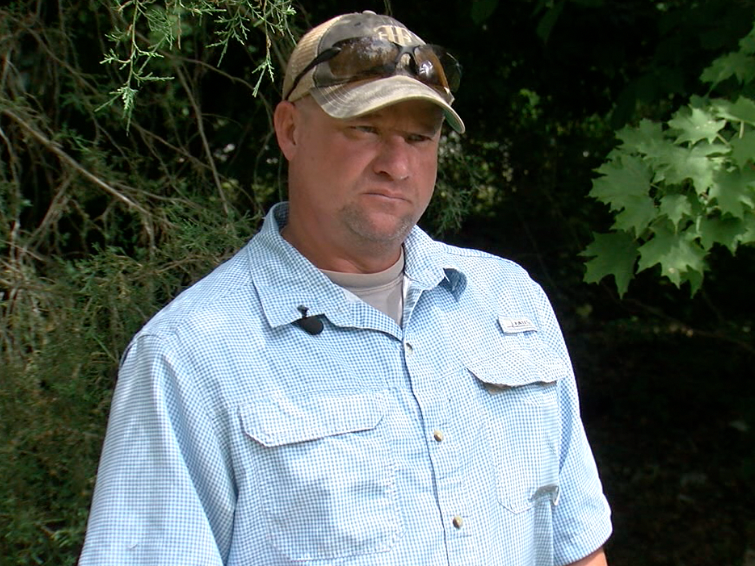
Tate Township Trustee John Wilson has heard from plenty of neighbors like Rees, who are upset with the construction dust, noise and heavy equipment traffic on rural roads.
“In the past seven months, I get phone calls probably three a day. People stop in to see me every day … giving me their opinions,” and Wilson said the vast majority are against solar.
Those complaints prompted Wilson and the other Tate Township trustees to pass a resolution banning future large-scale solar and wind facilities in April.
A spokesperson for Texas-based Vesper Energy, which owns Nestlewood, said the project will be operational by the end of 2023 and generate 80 megawatts to the power grid.

“Vesper Energy is committed to minimizing the construction duration and impact on our neighbors. Once operational, a solar project’s operations are quiet and generally unnoticeable,” according to a Vesper spokesperson.
But the backlash from Nestlewood spread across Clermont County this spring. In addition to Tate Township, trustees from eight other mostly rural townships also passed resolutions to ban large-scale solar and wind facilities: Batavia, Goshen, Jackson, Monroe, Ohio, Stonelick, Washington and Williamsburg.
“When you drive out and look at it, they are unsightly. It’s not like looking at a pristine cornfield or a soybean patch,” said Washington Township Trustee Dennis Cooper. “They’re calling it a solar farm but really, I don’t know what’s farming about it.”

Rees worries about the debris from the solar construction he finds in his water drainage ponds. He doesn’t want his horses to eat it.
“It cost me clients because of the noise. People couldn’t ride horses because of the constant pounding of stuff going in, and it took away a lot of the wildlife that we had,” said Rees, who noted the geese and ducks that regularly visited his wetlands have vanished and his retention ponds now contain a film of white scum.
“Give me a good explanation of how this is benefiting me. I’m not anti-solar, but I’ve also got to survive,” said Rees, who installed loudspeakers in his barn to mask the construction noise from scared horses. “I don’t think that’s fair to me or the people around me.”
Ohio is attractive to solar companies because it is part of a 14-state transmission network, the PJM Interconnection, that has open circuits for solar farms to generate more power. The network coordinates the movement of wholesale electricity in the mid-Atlantic, from Illinois to New Jersey.
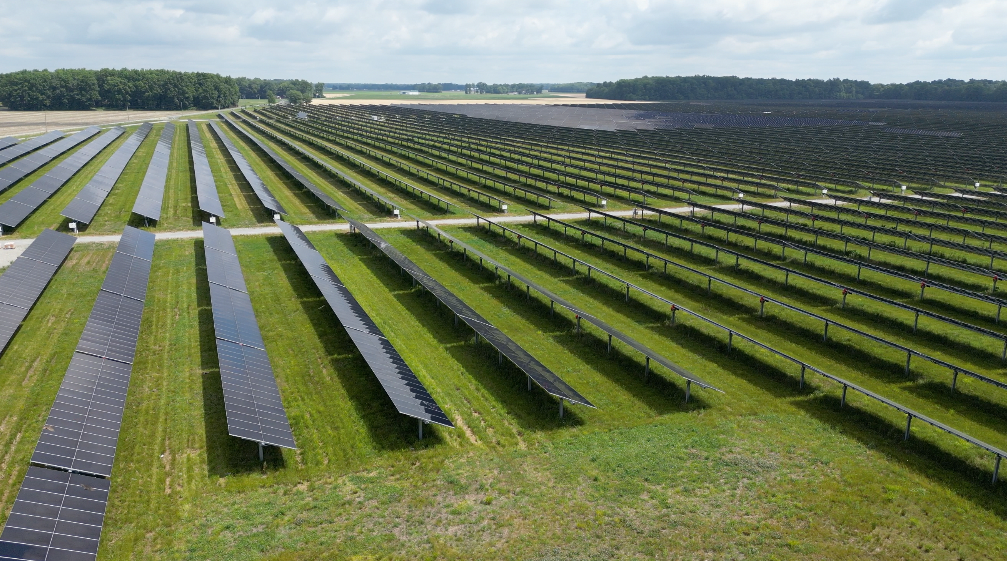
Most solar companies want to lease land within two miles of transmission lines, which cut through Tate Township, with one line cutting through East Fork Lake, which makes Wilson worry because it is a major county drinking water source.
“Especially in north central and western Ohio, there's a number of transmission circuits that have additional capacity or room to put megawatt-scale power generation into the system,” said Dale Arnold, director of energy, utility and local government policy for the Ohio Farm Bureau Federation.
Arnold travels the state advising farmers and local governments on how to negotiate with energy and solar companies. He explains environmental concerns, aesthetics and economic benefits for landowners and the community.

“When I walk into a hearing room, half the people see me as a guardian angel and the other half see me as a devil incarnate,” Arnold said. “Welcome to energy development in the 21st century.”
Arnold has been working with solar developers since they arrived in Ohio a decade ago.
“In your area, I started meeting with farmers 10, 12 years ago because you had a lot of different developers from other parts of the United States come and talk to them about leasing agreements,” Arnold said. “It usually takes four or five years to develop a project.”
Solar development in Ohio is spreading quickly, as local governments seek to control it. In the past year commissioners in Brown, Butler and Highland counties have voted to ban large scale solar and wind farms.
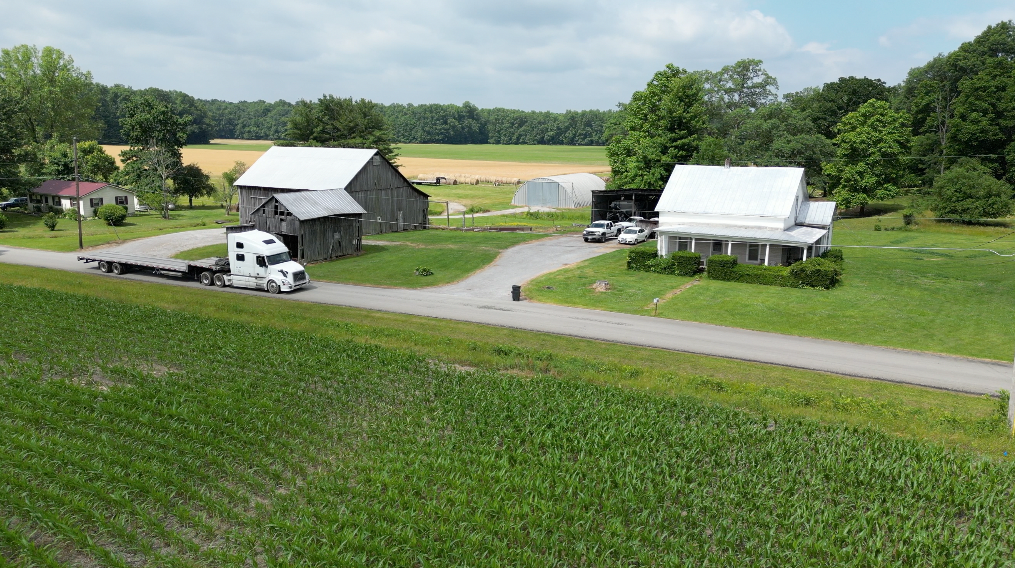
Many in Clermont County want their commissioners to pass a similar ban at Wednesday's public hearing.
“I hope they say no. No more solar,” said Robin Colligan, who owns 27 acres of family farmland with her husband, Bart, in sight of the Nestlewood solar project.
“If you don’t want to farm, fine sell it. Sell it to somebody who does. But don’t destroy something that is absolutely beautiful for that,” Colligan said, pointing at the construction.
Since construction began, Colligan can’t hang out laundry because it gets covered in dust. She can’t walk on the one-lane roads by her home because she worries about getting hit by semi-trucks that are making frequent deliveries to the site.
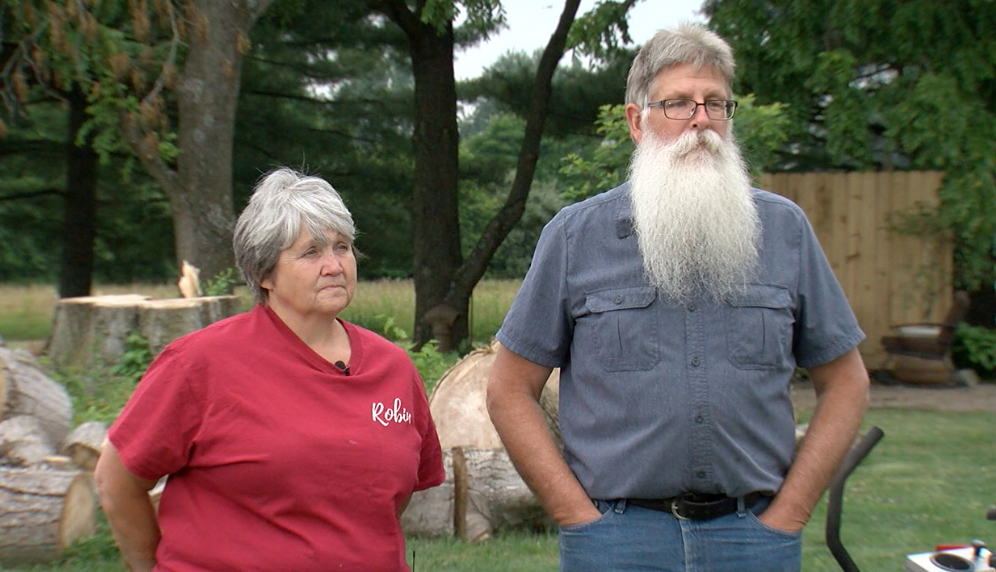
She also worries about the drainage patterns from the construction and if it will flood her farmland, and the impact on deer, fox, turkey, and other wildlife.
But solar does have many supporters, especially in parts of Clermont County where officials are trying to market retired coal plant sites for new development. Solar projects bring in much-needed tax revenue to local governments and school districts, and plenty of construction jobs.
Some farmers can get paid three times more to lease their land to solar companies than to grow crops on it. That has allowed some families to pay down farm debt, protect the future of their land and transition it to younger generations, Arnold said.
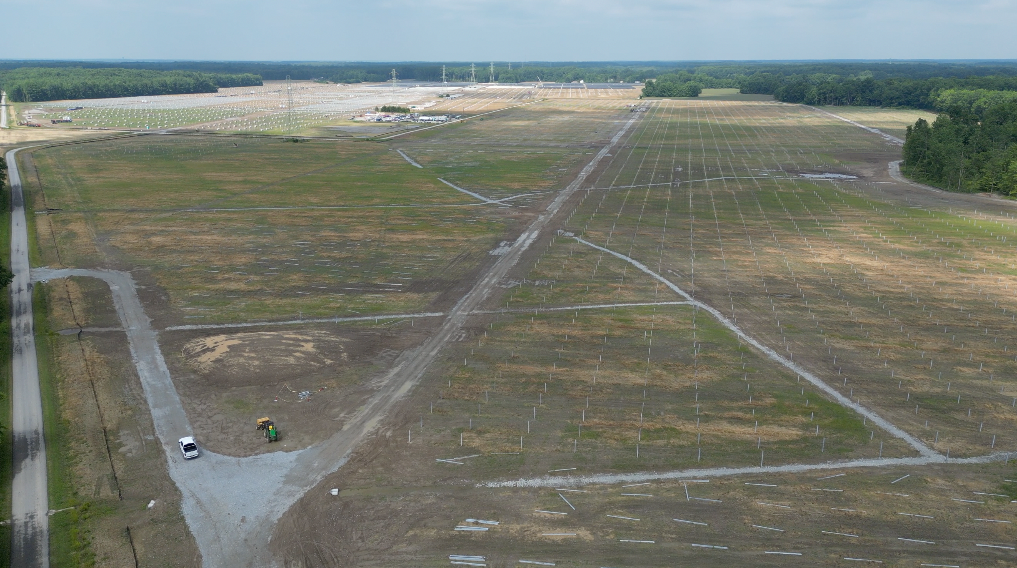
But farmers need to understand the complexity of these solar lease agreements in order to advocate for themselves and their land, Arnold said.
“You don't want to sign one of these agreements on the hood of your pickup truck,” Arnold said. “There's a number of things you need to think to look at … farm income, resource, conservation, and protection, repair, remediation, potential conflict resolution and all those things going forward. This is a much more complex issue than what some people realize.”
While Clermont County weighs the future of solar farms, a second large-scale project is already in the works near the village of Williamsburg.
Kansas City-based Savion is developing the Clear Mountain Energy Center, which once operational in 2026 is expected to generate up to 100 megawatts of solar electricity and 52 megawatts of battery storage over 35 years.

“We have about 1,200 acres under land agreement currently. Out of that, we expect about 700 acres to host the project,” said Eddie Barry, Savion’s director of development for Ohio. “It's sited primarily in Jackson Township; small portions fall in Williamsburg and Batavia Townships as it's currently planned.”
The project is currently in the pre-application stage with the Ohio Power Siting Board, which regulates large scale projects, and Barry expects to submit an application in September with construction beginning in 2025.
Regardless of how Clermont County commissioners vote on Wednesday, Barry said the Clear Mountain project will move forward.
“Our project is grandfathered under Senate Bill 52 which would in our view mean that those resolutions are not specifically prohibitive with regard to our project,” Barry said. “But we want to work with the townships and with the county to ensure that the project we bring to the area that is aligned with their view and vision … and presents the type of benefits that they want to see.”
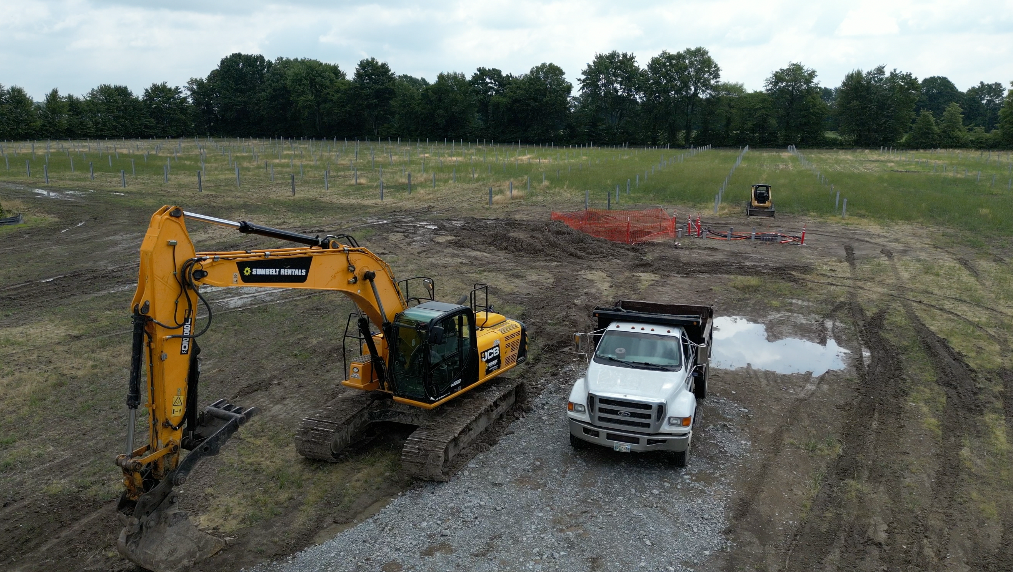
Gov. Mike DeWine signed S.B. 52 in October 2021, giving county commissioners some oversight over large-scale solar and wind farms. If a county wants to stop a project, the law requires commissioners to adopt a resolution prohibiting construction or limiting boundaries within 90 days of a public meeting, according to the Ohio Power Siting Board’s website.
Barry estimates the Clear Mountain project will bring in $900,000 in additional tax revenue per year to be distributed among local jurisdiction, with school districts receiving well over 50 percent of that revenue under the pilot program, Barry said.
Already the project is generating a lot of public interest.
“I think the idea of using farm ground for solar is a very exciting potential use of land. We need to be less reliant on fossil fuels for energy and solar is a cost-effective way to generate electricity … I support this project,” Amelia resident Alison Howell wrote in an email to the Ohio Power Siting Board on June 7, in support of Clear Mountain.

"Some people are afraid of solar ‘taking over all the farmland,’ but this couldn’t be farther from the truth. Obviously, no one's land gets taken away, but the land that is used is only a small fraction of the farmland out there … In fact, it would only take a bit over 1 percent of the land in Ohio to power the entire state with solar,” wrote Robert Quadland of Batavia in a June 6 email to the siting board.
But Robin and Bart Colligan are steadfast in their opposition. Solar companies approached them about leasing their farmland for a smaller-scale project, and they said no.
While the power siting board oversees large solar and wind projects, there is no state oversight of smaller-scale, community-level projects, which are only governed by local township zoning rules, if any exist.
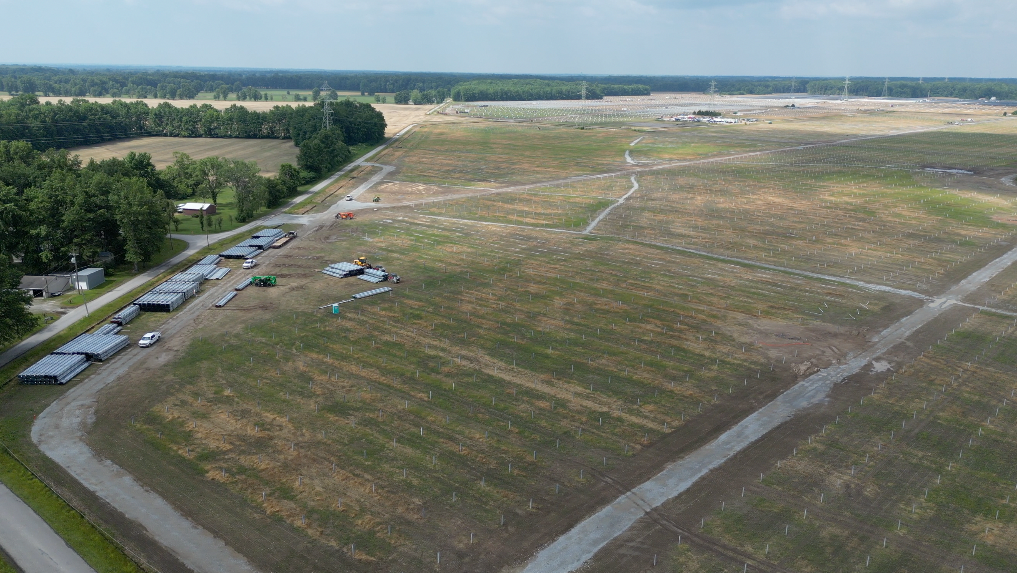
The Colligans drove to see the state’s largest solar project, Amazon Solar Farm Ohio - Hillcrest near Mt. Orab. They said what they saw reinforced their strong opposition and made them sad for what they think their neighborhood will look like once Nestlewood is finished.
“Before the solar farm, it was beautiful. You could see the sun set over the trees and in the fall you could see the color on the tree line. And it was green with a lot more wildlife,” said Robin Colligan. “It’s totally different now because all we see if we look toward that solar field or down that road … you see all gray. It’s just all metal posts or tombstones.”






